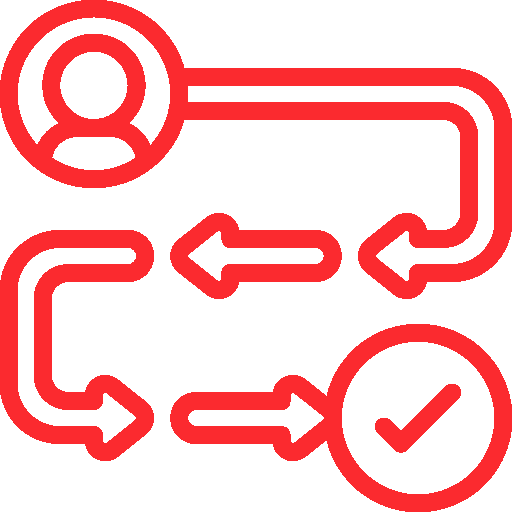Updated on: 04.02.2022

Application:
Business Development | Design | Marketing
Journey Map
Description of user interaction throughout the service lifecycle.
What is it about?
The journey map (also called customer journey map or user journey map) is one of the most important tools of service design and is suitable for a wide variety of tasks. Depending on the objective, the description parameters and properties of the individual interaction points can be varied. A detailed representation of the process from the user's perspective is created, which forms an essential success criterion for the long-term market success of a service along the entire customer journey.
Note
The use of the journey map to optimise existing services makes it possible to include relevant KPIs for each interaction point and to carry out a target-performance comparison.
What is being done?

Step-by-step guide
1. definition of the persona
A customer journey is always created from the perspective of a specific role or person. The personas involved in the service process must therefore be selected.
2. coordinate the time dimension and other boundary conditions
Which task or scenario should be illuminated? It must be clarified in which context the persona is located and whether the entire user journey or only a subset is to be developed.
3. explore the emotional level
4. recognise potential for improvement
In this step, all possible benefits and problems are identified, uOpportunities for improvement are defined for all phases of the journey. These options can be developed through discussions and various questions in the team.
5. appoint persons responsible for implementation
In order for the entire improvement potential to be exploited and implemented, it is necessary to define and note down responsible persons for each process. The respective area of responsibility is also assigned.
Further notes on the use of the Journey Map
Set focus
Defining a concrete persona, a channel and a goal in advance enables an optimal creation of the journey map.
Use empathy
The design team must empathise with the user and their entire experience. The needs of the individual are paramount. The user's situation also plays a significant role and should be taken into account when developing the journey map. A supposedly same process can lead to different results in the journey map for two users in different emotional or personal situations.
Use realistic data
The more data that can be used from customer surveys and validations, the better. Building a journey map on mere assumptions and observations is not advisable.
Thinking around the corner
It is necessary to ask questions away from the obvious in order to really delve deep into the customer journey. This way, as many levels of the customer experience as possible can be captured and illuminated.
Share and use Journey Map
The journey map shows relevant touchpoints of the customer experience and also highlights gaps and problem points in the interaction with the user. Therefore, these results should be shared with all stakeholders from all relevant processes.
